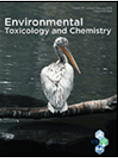A Framework for Ecological Risk Assessment of Metal Mixtures in Aquatic Systems

Scientific abstract
Although metal mixture toxicity has been studied relatively intensely, there is no general consensus yet on how to incorporate metal mixture toxicity into aquatic risk assessment. Here, we combined existing data on chronic metal mixture toxicity at the species level with species-sensitivity-distribution (SSD)-based in-silico metal mixture risk predictions at the community-level for mixtures of Ni, Zn, Cu, Cd and Pb, in order to develop a tiered risk assessment scheme for metal mixtures in freshwater. Generally, independent action (IA) predicts chronic metal mixture toxicity at the species level most accurately, while concentration addition (CA) is the most conservative model. Mixture effects are non-interactive in 69% (IA) and 44% (CA) and antagonistic in 15% (IA) and 51% (CA) of the experiments, while synergisms are only observed in 15% (IA) and 5% (CA) of the experiments. At low effect sizes (around 10% mixture effect), CA overestimates metal mixture toxicity at the species-level by 1.2-fold (i.e. the Mixture interaction Factor [MiF]; median). Species, metal presence or number of metals does not significantly affect the MiF. To predict metal mixture risk at the community-level, bioavailability-normalization procedures were combined with CA or IA using SSD-techniques in 4 different methods, which were compared using environmental monitoring data of a European river basin (Dommel, the Netherlands). We found that the most simple method, in which CA is directly applied to the SSD (i.e. CASSD ), is also the most conservative method. CASSD has a median Margin of Safety (MoS) of 1.1 and 1.2 for binary mixtures relative to the theoretically more consistent methods of applying CA or IA directly to the dose response curve (i.e. CADRC or IADRC , respectively) of each species individually prior to estimating the fraction of affected species. The MoS increases linearly with an increasing number of metals, up to 1.4 and 1.7 for quinary mixture (median) relative to CADRC and IADRC , respectively. When applying our methods on a geochemical baseline database (FOREGS), we found that CASSD yielded a considerable number of mixture risk predictions, even when metals were at background (8% of the water samples). Metal mixture risks predicted with the theoretically more consistent methods (e.g., IADRC ) were in fact very limited under natural background metal concentrations (<1% of the water samples). Based on the combined evidence of chronic mixture toxicity predictions at the species-level and of in-silico risk predictions at the community-level, a tiered risk assessment scheme for evaluating metal mixture risks is presented, with CASSD functioning as a first, simple conservative tier. The more complex, but theoretically more consistent and most accurate method, IADRC , can be used in higher tier assessments. Alternatively, the conservatism of CASSD can be accounted for deterministically by incorporating the MoS and MiF in the scheme. Finally, specific guidance is also given related to specific issues, such as how to deal with non-detect data and complex mixtures that include so-called 'data-poor' metals.
Full reference (link):
Nys C, Van Regenmortel T, Jansen CR, Oorts K, Smolders E, De Schamphelaere KAC. A framework for ecological risk assessment of metal mixtures in aquatic systems. Environ Toxicol Chem 37 (3): 623-642. DOI: 10.1002/etc.4039
